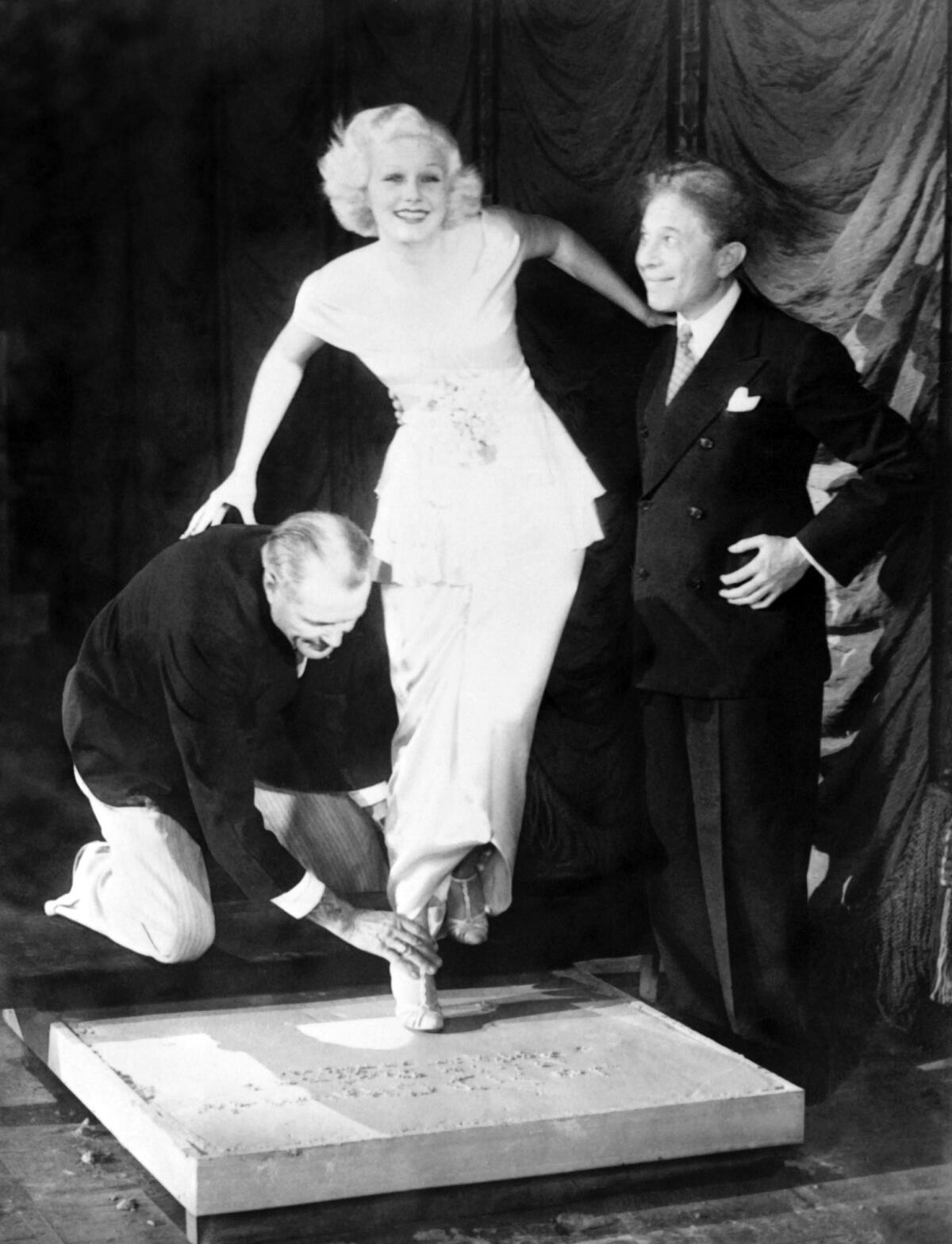Who was Sid Grauman anyway? Master showman, seasoned prankster and Chinese Theatre impresario
- Share via
The note arrived at the Los Angeles County clerk’s office about a week after the March 5, 1950, death of famed Hollywood theatrical producer and entrepreneur Sid Grauman.
Written with blue crayon in a child-like scrawl, it read:
“My childhood sweet heart [sic] shall receive $32,000 in cash of my lifes [sic] savings.
Her name is Carrie J. Adair of 243 So. Olive St., Los Angeles.
Sid Grauman”
The note was dated Oct. 4, 1949, but was postmarked March 9, the day of Grauman’s funeral. A funeral that had been attended by more than 1,000 Hollywood stars, many of whom Grauman had immortalized in the cement entrance to his famous Chinese Theatre.
Carrie Adair turned out to be the 48-year-old widow of a serviceman. She denied any knowledge of the note but claimed that she and Grauman had dated in the 1920s and that when she became pregnant, Grauman gave her $200 and told her to place the baby with an orphanage. Instead, Adair said, she returned home to Texas to give birth to a daughter who was then raised by relatives.
Two weeks later, Adair filed a claim on Grauman’s entire estate. Eventually, the case was thrown out of court —there was no proof of even common-law marriage and Adair’s alleged daughter denied kinship — but the brief scandal seemed only fitting for the master showman and seasoned prankster (he reportedly told friends that men who made wills were inviting untimely deaths).

Born in Indianapolis on St. Patrick’s Day 1879, Grauman entered show business as a teenager, traveling as far away as the Yukon Territory to produce stage shows with his father. The family eventually settled in San Francisco, establishing themselves as vaudeville impresarios and running numerous theaters. The younger Grauman quickly branched out as an exhibitor of “flickers,” as early silent films were called, with venues in San Jose, Stockton and Sacramento.
By 1917 Grauman was in Los Angeles, where he began building opulent movie palaces including the Metropolitan and Million Dollar theaters downtown and the Chinese and Egyptian in Hollywood. He revolutionized the presentation of motion pictures with the addition of the prologue, gala premieres and madcap promotions.
Perhaps Grauman’s most notable contribution to the Chinese, and indeed Hollywood, are the famous hand and foot prints that adorn the theater’s cement forecourt. Like many of the legends surrounding the man, apocryphal origin stories abound. Most involve someone accidentally stepping in wet cement, causing Grauman to have a Newtonian moment of Hollywood marketing genius.
While other exhibitors projected themselves as serious business types in starched shirts, Grauman was a natty dresser who wore large hats tilted at an angle. His personal style extended to the head-turning custom automobile — California blue with black trim — he had designed for him in 1920.

Grauman sold the Chinese Theatre to Fox in 1929, but returned to operate it two years later and remained involved with his most famous auditorium until he became ill shortly before his death. Ever the showman, he lamented the industry’s lack of panache in later years, arguing that moviegoers deserved a “theatrical dinner, not just popcorn.”
See the most-read stories in Entertainment this hour »
More on the 90th Anniversary of the Chinese Theatre:
All the Hollywood secrets hidden in the handprints at the Chinese Theatre's Forecourt of the Stars
From Grauman's to TCL: 90 years of the Chinese Theatre
PHOTOS: 90 years of ceremonial handprints at the Chinese Theatre
Stars share their best memories of the Chinese
Only good movies
Get the Indie Focus newsletter, Mark Olsen's weekly guide to the world of cinema.
You may occasionally receive promotional content from the Los Angeles Times.







